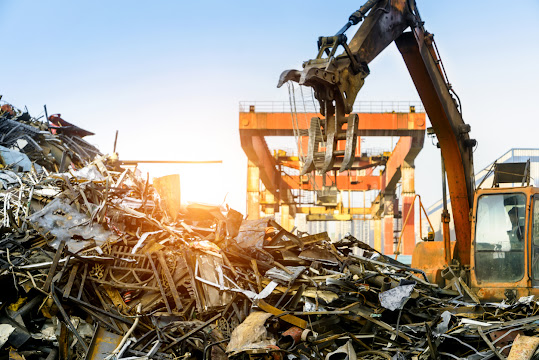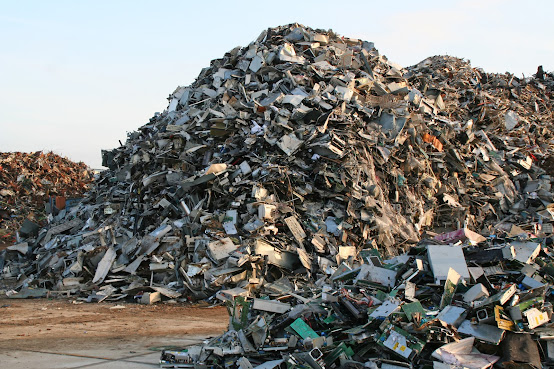How Recycling Trends Impact Aluminium Scrap Prices Worldwide
In today's environmentally conscious world, recycling isn't just a trend; it's a necessity. As we navigate through the complexities of sustainability and resource management, one material stands out for its remarkable recyclability—aluminium.
This lightweight yet sturdy metal has found its way into countless aspects of our daily lives, from the soda cans we drink to the cars we drive.
But have you ever stopped to wonder how the global push towards recycling affects the Aluminium Scrap Price Melbourne? It's a fascinating dance of supply and demand, environmental policy, and economic implications that touch on both local and international scales.
So, let's dive into the world of aluminium recycling and explore how recent trends are shaping the market, affecting the aluminium scrap price, and ultimately, our planet.
The Ripple Effect of Global Recycling Initiatives
Across the globe, initiatives aimed at increasing recycling rates are having a significant impact on the aluminium scrap price. Governments and environmental organisations are pushing for higher recycling rates to reduce waste and conserve resources, leading to a surge in the supply of recycled aluminium.
This increased supply can lead to fluctuations in the aluminium scrap price, depending on how demand matches up. But it's not just about the economics; these initiatives reflect a growing awareness and commitment to sustainability that resonates with consumers and industries alike.
Technological Advancements in Aluminium Recycling
As technology advances, so does the efficiency of recycling processes, affecting the Aluminium Scrap Price Melbourne in interesting ways.
New methods for sorting and processing aluminium scrap are making it cheaper and more efficient to recycle aluminium, potentially lowering the cost for manufacturers who use recycled aluminium.
However, these technological improvements also mean that higher-quality aluminium can be recovered, which can increase the value of certain types of aluminium scrap. It's a dynamic balance that keeps the market on its toes.
The Role of Emerging Markets
Emerging markets play a crucial role in the global aluminium recycling landscape. As countries develop, their consumption of aluminium products increases, leading to more scrap.
Additionally, the growth of recycling industries in these markets can affect the global aluminium scrap price by altering the supply dynamics. It's a global dance of supply and demand, where emerging markets are increasingly taking the lead.
Environmental Policies and Their Impact
Environmental policies are perhaps one of the most direct ways in which governments can influence the price of aluminium scrap.
By implementing regulations that require or incentivise the use of recycled aluminium, governments can create a higher demand for aluminium scrap, potentially increasing its price.
These policies not only aim to reduce the environmental footprint of aluminium production but also support the recycling industry and contribute to a circular economy.
Consumer Awareness and Demand for Sustainable Products
In recent years, there has been a noticeable shift in consumer preferences towards more sustainable products. This trend is directly influencing the aluminium scrap price by increasing demand for products made with recycled aluminium.
As more consumers opt for these sustainable options, manufacturers are incentivised to use recycled aluminium, further driving up the demand and potentially the price of aluminium scrap.
It's a clear example of how consumer choices can have a profound impact on global markets.
The Influence of Global Economic Trends
The Aluminium Scrap Price doesn't exist in a vacuum; it's influenced by broader economic trends. Factors such as global economic growth, trade policies, and currency fluctuations can all impact the demand for aluminium products and, by extension, aluminium scrap.
For instance, a booming construction industry may increase the demand for aluminium, affecting the price of aluminium scrap. It's a reminder of how interconnected our global economy is and how global trends can have local impacts.
The Future of Aluminium Recycling and Its Price
Looking ahead, the future of aluminium recycling and the Aluminium Scrap Price is bright but uncertain.
With ongoing advancements in recycling technologies, increasing global awareness of sustainability, and evolving market demands, the aluminium recycling industry is set for significant changes.
These factors will continue to influence the Aluminium Scrap Price, shaping the economics of recycling and the sustainability of aluminium as a material.
As we move forward, the importance of recycling and managing our resources wisely becomes ever more apparent, making the journey of aluminium from scrap to product a key piece of our sustainable future.
In conclusion, the world of aluminium recycling is a microcosm of the larger push towards sustainability and environmental stewardship.
As recycling trends evolve, so too does the Aluminium Scrap Price Melbourne, reflecting the complex interplay of supply and demand, technological advancements, and global economic forces.
By understanding these dynamics, we can appreciate the role of aluminium recycling in our journey towards a more sustainable world, making each can, car part, and piece of aluminium foil not just a product but a part of a larger story of sustainability.
So, the next time you recycle an aluminium product, remember that you're contributing to a global effort that impacts not just the Aluminium Scrap Price but the health of our planet.




Comments
Post a Comment